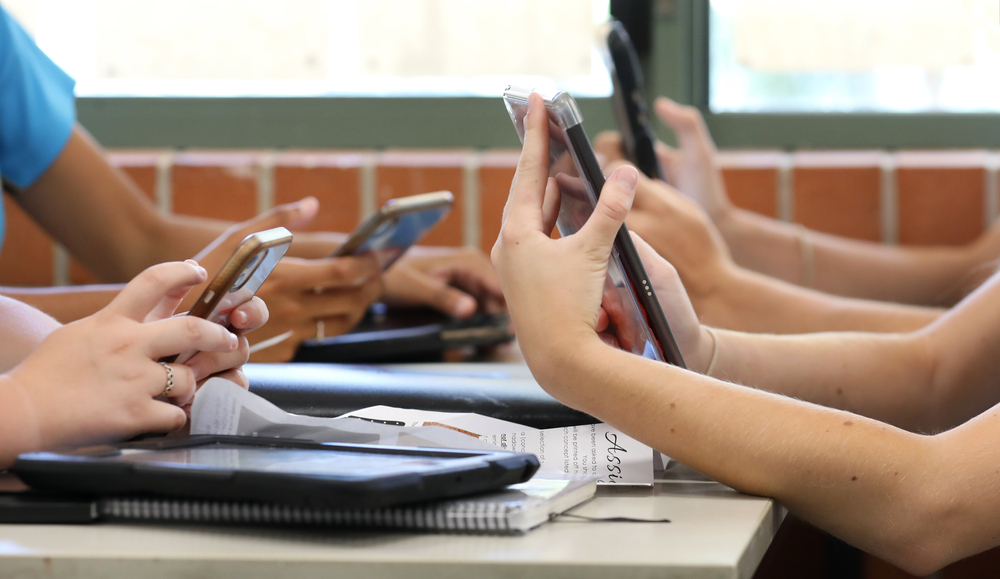eSafety – Protecting children online
Tik Tok, Instagram, Facebook, Snapchat, Roblox, Fortnite, are only a small few of the online applications used by millions of young Australians. Whether they are a social media ‘app’ or online gaming platform, whilst these sites allow for communication, friendship building, networking and creativity; they are also the gateway for significant online abuse and child safety and protection concerns.

Featured Posts

Invitation for Community Participation in new Governance Structure
23 December, 2025
Jewish Community in our Prayers
15 December, 2025
First to finish
5 December, 2025On average, Australian children over the age of 14 are spending up to 6 hours on social media each week (Humphry, J, 2023). Within these 6 hours, children are being exposed or are at significant risk of exposure to:
- Distressing content → Catfishing
- Image-based abuse → Extortion
- Illegal and restricted content → Technology affiliated abuse
- Child sexual abuse → Cyberbullying
- Pornography/child pornography → Distribution of nude images
In December 2024 and February 2025, eSafety conducted a ‘Keeping Kids Safe Online’ survey. The survey examined the online experiences and participation of children in Australia using a sample of “children aged 10 to 17 years living in Australia and their parent or caregiver. A total of 3,454 children and their parent or caregiver participated in the survey.”
Key Findings:
- More than 1 in 2 (53%) children aged 10 to 17 had experienced cyberbullying and almost 3 in 4 (74%) had ever seen or heard content associated with harm online. In addition, 1 in 4 (25%) had ever experienced non-consensual tracking, monitoring or harassment at some point.
- Experiences of cyberbullying, exposure to content associated with harm and non-consensual tracking, monitoring and harassment increased with age. Trans and gender-diverse children were more likely than girls and boys to have experienced cyberbullying and to have been exposed to content associated with harm online. They were also more likely to have experienced non-consensual tracking, monitoring or harassment at some point. Girls were also more likely than boys to have experienced cyberbullying and non-consensual tracking, monitoring or harassment.
Click here to read the full report.
In 2015 the Office of the Children’s eSafety Commissioner was established to help safeguard Australians at risk of online harm with the focus on protecting young Australians from serious child sexual abuse material and cyber bullying.
In 2021 The Online Safety Act was introduced. The Act makes service providers more accountable for the online safety of its users by embedding a clear set of expectations for service providers, fostering accountability for the safety of their users through a set of Basic Online Safety Expectations and online service providers are required to report on how these expectations are being met. eSafety is able to identity providers who do not meet these expectations. The Act gives substantial power to the esafety Commissioner to protect adults and children, across most online platforms. The Act also required industries to develop ways to regulate illegal and restricted content. It is under this Act that eSafety encourage prevention, provide protection and drive proactive systemic change.
Online safety for children will constantly evolve alongside technology advancements. With the introduction of deepfakes and AI driven exploitation, it is important for everyone to be proactive in strengthening their awareness, knowledge and understanding cyber safety.
Diocesan resources:
Section 13 of the Safeguarding Framework Policy sets out the requirements for diocesan workers regarding safeguarding in the online environment.
The Office of Safeguarding, in collaboration with the eSafety Commissioner, have made available a series of eLearning videos, accessible via mnpeople for employees:
These four short professional learning videos are designed by the eSafety Commissioner for school leaders, teachers and non-teaching staff, who play a role in supporting or leading the response and reporting associated with critical online incidents that occur within school communities. During the videos, case studies are explored, incident assessment tools are shared as well as ways of supporting both primary and secondary school students.
These four 7-minute professional learning videos are designed for school leaders, teachers, and non-teaching staff. The videos take the viewer on a journey of learning, reflection, strategies for change (upskilling, conversations, practice scenarios) and future action as an educator of children and young people. At the end of each video there’s an opportunity to pause for a question or reflection.
External Resources:
The following resources are available for the Catholic Diocese of Maitland-Newcastle’s wider communities:



